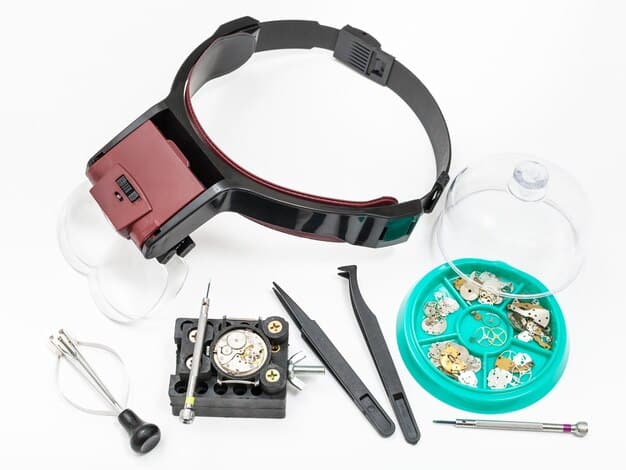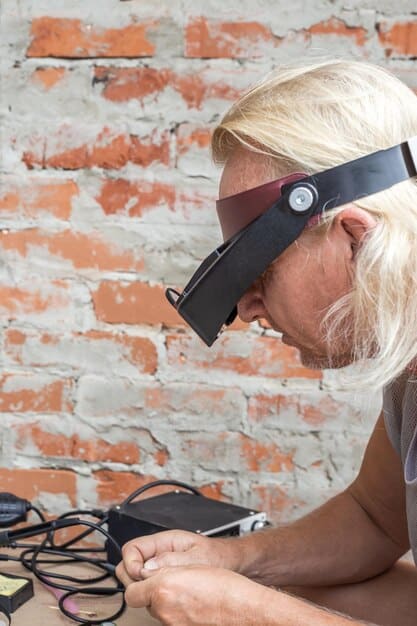DIY VR Headset Cooling: Reduce Fogging by 75% with Simple Mods

Reduce VR headset fogging by up to 75% with these DIY cooling mods, ensuring a clearer, more immersive virtual reality experience.
Is VR fogging ruining your immersive experiences? Discover effective DIY VR headset cooling mods to slash fog by up to 75% and enjoy crystal-clear visuals.
Why VR Headset Cooling is Essential
Fogging inside your VR headset is a common annoyance that can significantly detract from the immersion. Understanding why fogging occurs is the first step toward tackling the problem.
VR headsets create a sealed environment around your eyes. As you use the headset, your face generates heat and perspiration, which increases humidity within the headset. This warm, moist air comes into contact with the cooler lenses, causing condensation – the dreaded fog.
The Science of Fogging
Fog forms when warm, moist air meets a cooler surface. This happens inside a VR headset when the warm air from your face hits the relatively cooler lenses. The moisture in the air condenses on the lens surface, creating a thin layer of water droplets that scatter light and reduce clarity.
Impact on VR Experience
Fogging can disrupt your VR sessions in several ways. It blurs the visuals, making it difficult to focus on fine details. It also requires frequent pauses to wipe the lenses, breaking the flow of your experience. For intense, active games, fogging can become especially problematic, leading to frustration and reduced playtime.

Combatting fogging ensures comfortable and immersive VR experiences.
Simple Mods for Immediate Relief
If you’re looking for quick fixes to reduce fogging, these simple modifications can provide immediate relief. These methods are easy to implement and require minimal investment.
- Use a Facial Interface Spacer: A spacer increases the distance between your face and the lenses, improving airflow and reducing the amount of warm air reaching the lenses.
- Apply Anti-Fog Spray: Specially formulated anti-fog sprays create a temporary barrier on the lenses, preventing moisture from condensing.
- Improve Room Ventilation: Ensure the room where you’re using VR is well-ventilated to keep the air cooler and drier, reducing the likelihood of fogging.
These straightforward mods offer a quick and easy means to reduce fogging and enjoy clearer visuals during your VR sessions.
Implementing Active Cooling Solutions
For a more effective long-term solution, consider implementing active cooling methods which directly remove warm air from within the headset. These involve using small fans to circulate air and prevent condensation.
Active cooling addresses the root cause of fogging by continuously drawing out warm, moist air. This keeps the lenses clear and significantly enhances the overall VR experience.
Attaching Mini Fans
One popular method involves attaching small USB-powered fans to the VR headset. These fans can be strategically positioned to draw air away from the facial area.
You could use adhesive strips or custom 3D-printed mounts to secure the fans. Position the fans to pull air from the bottom or sides of the headset, directing it away from the lenses.
DIY Fan Mounts
Creating your own fan mounts allows for personalized placement and a cleaner aesthetic. 3D printing is ideal for this, but you can also fashion mounts from cardboard or plastic.
Experiment with different fan orientations and mounting locations to find the most effective setup for your specific headset.

Active cooling solutions, though requiring a bit more effort, are incredibly effective at eliminating fogging and ensuring continuous clear visuals.
Selecting the Right Components
Choosing the right components is crucial for DIY VR headset cooling. Consider fan size, power source, and mounting options to create an effective and comfortable cooling solution.
Selecting high-quality components ensures optimal performance and longevity of your DIY cooling system.
Fan Specifications
Look for small, lightweight fans with a decent airflow rating (CFM). USB-powered fans are convenient as they can draw power directly from the headset or a portable power bank.
Consider the noise level of the fans as well—quieter fans will provide a more immersive experience without distracting background noise.
Power Options
USB power is the most common and convenient option. You can use a USB port on the headset itself, or connect the fans to a portable power bank for extended use.
- VR Headset USB: Check to see if you have a spare USB port on your headset, and be mindful that this may drain the headset battery life quicker.
- Portable Power Bank: A power bank will extend the life of the VR fan without impacting the headset’s battery.
Carefully selecting components can greatly improve the performance and convenience of your DIY VR headset cooling system.
Troubleshooting Common Issues
Even with careful planning, issues might arise when implementing DIY VR headset cooling. Addressing these common problems ensures a smooth and effective cooling setup.
- Fan Vibration: Isolate fans using soft mounting materials to reduce vibration noise and discomfort.
- Cable Management: Neatly route cables to prevent entanglement and maintain freedom of movement.
- Overheating: Ensure adequate airflow around the fans to prevent them from overheating and potentially damaging the headset.
Knowing how to troubleshoot common issues can help you fine-tune your cooling system for optimal performance and comfort.
Maintaining Your Cooling System
Regular maintenance ensures your DIY VR headset cooling system continues to perform optimally. Simple steps can extend the lifespan and effectiveness of your cooling solution.
Proper maintenance prevents performance decline and keeps your VR experience fog-free and enjoyable.
Routine Cleaning
Dust and debris can accumulate on fans and vents, reducing airflow and cooling efficiency. Use a soft brush or compressed air to clean these components regularly.
Component Checks
Periodically inspect the fans, cables, and mounts for any signs of damage or wear. Replace any worn-out parts to prevent malfunctions.
Maintaining components will ensure the best performance for your DIY VR Headset cooling system.
| Key Point | Brief Description |
|---|---|
| 💨 Fogging Causes | Warm, moist air from your face condenses on the cooler lenses inside the VR headset.. |
| 🛠️ Simple Mods | Use facial interface spacers, anti-fog spray, and improve room ventilation for immediate relief. |
| ❄️ Active Cooling | Attach mini USB fans to draw out warm air, preventing condensation and enhancing clarity. |
| ⚙️ Maintenance Tips | Regularly clean fans and vents, check for damaged components, and ensure adequate airflow. |
[FAQ]
▼
Fogging happens when warm, moist air from your face meets the cooler lenses inside the VR headset, causing condensation. This is particularly common during active VR sessions.
▼
Yes, anti-fog sprays create a temporary barrier on the lenses, preventing moisture from condensing. Apply a small amount and wipe it gently across the lenses before each session.
▼
Position the fans to pull air from the bottom or sides of the headset, directing it away from the lenses. Experiment to find the most effective placement for your headset model.
▼
Yes, using a portable power bank is generally safe. Ensure the power bank is from a reputable brand and provides stable power output to avoid damaging the fans or headset.
▼
Aim to clean your cooling system at least once a week, or more frequently if you notice dust accumulation. This will keep the fans running efficiently and maintain good airflow.
Conclusion
By implementing these DIY VR headset cooling mods, you can significantly reduce fogging and enhance your virtual reality experiences. Whether opting for simple fixes or more advanced active cooling solutions, a clear and comfortable VR session is within reach. Experiment and find the methods that work best for your setup, and say goodbye to blurry visuals.





